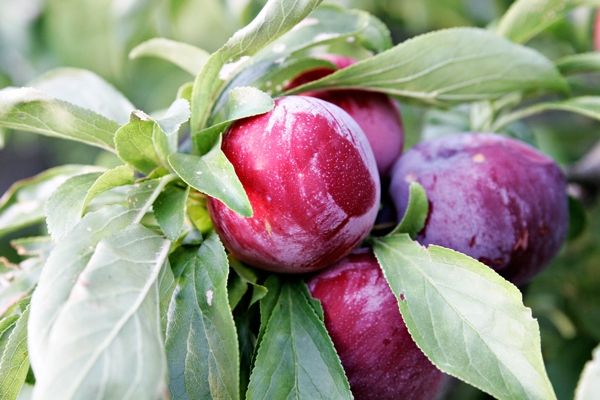Growing & Using Plums

It’s the plum season, and supermarkets all across the country are full of ‘New Season’ plums ready to buy. But they’re terribly expensive. Have you thought about growing your own? While ‘Victoria’ is probably the best known garden plum, there are a wide range of more unusual plums and greengages, many of which can even be grown in small gardens.
Growing plums
Plums are not especially fussy about the top soil in which they are grown, so any reasonably fertile soil should be fine. They flower in March or April, so you may need to protect the tree from frost if you live in a cold area. Prune trees any time between flowering and fruiting, especially if the crop if heavy, and you need to protect branches from the weight.
Although you can’t yet get ‘patio plums’ as you can apples and pears, you can buy plum trees on dwarf or semi-dwarf rooting stock, which are suitable for small gardens, and will grow only to about 2m tall. The best known rooting stock is St Julien A, but Pixy is also good for small trees. St Julien A is particularly tolerant of heavy soils, so could be a good choice if your soil is clay. (Find out what sort of soil you have here.)
And don’t limit yourself to thinking just about plums: how about a greengage or damson tree? To my mind, it’s particularly good to grow fruit that you can’t buy easily in shops, and greengages and damsons certainly fit that bill. When choosing, you need to consider whether you have other trees around. Some plums are self-fertile, but others need a pollinator. If you plan to grow other fruit trees, such as apples or crab apples, this won’t be a problem, but if you are choosing just a single plum tree, then get one like Victoria or Pershore, which is self-fertile, and doesn’t need a pollinator.
Using plums
Although it’s possible that your plums will be eaten so fast that you don’t need to consider preserving any, it’s always helpful to have some ideas in hand. If you want to keep things simple, you could just stew your plums with a little sugar and water. Stewed plums freeze beautifully, and a batch can be defrosted to eat with breakfast cereal, or as the base for crumbles and pies all through winter.
Plums also make great jam, although it can be a little tart if you’re not careful. You might want to check how sweet your fruit is and adjust the sugar content of the jam accordingly! They are also very good for chutney, ketchup and plum sauce, all of which are fantastic with hot or cold meats and cheese. Plum sauce and ketchup also make a flavoursome addition to casseroles and stews.
